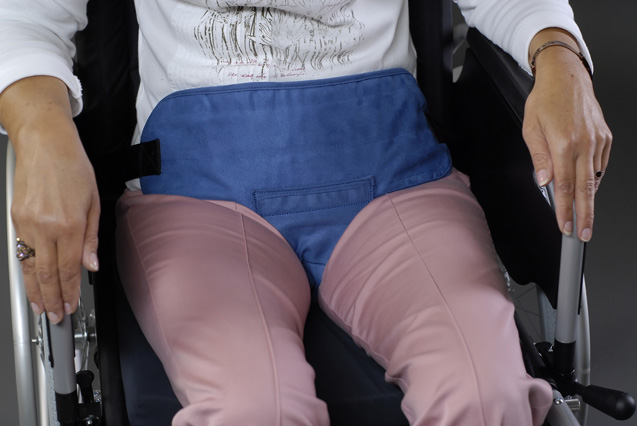 |
TRIDENT PHARM PTE LTD Trauma Bags and Kits Heel and Elbow Cushion Pressure Bandage Renol Pelvic Holder
|
| HomeContact MeSite MapTerms and ConditionsCompany DetailsReused Medical EquipmentOffer PageWebsite Builder |
|
Braden Scoring System The most commonly used pressure ulcer assessment tool in the United States is the Bradcn Scale. It consists of 6 subscales: sensory perception, moisture, activity, mobility, nutrition, and friction/shear. It is based on the 2 primary etiologic factors of pressure ulcer development-intensity and duration of pressure (addressed by the sensory perception, mobility, and activity subscales) and tissue tolerance of pressure (addressed by the moisture, nutrition, and friction/shear subscales). Each subscale within the Braden Scale contains a numerical range of scores, with 1 being the lowest score possible. The friction/shear subscale ranges from 1 to 3; the other subscales range from 1 to 4. The overall Bradcn Scale score is derived by totaling the numerical ratings from the 6 subscales. The lower the score, the higher the patient's risk for developing a pressure ulcer. Preventive Protocols After the total Braden Scale score is computed, a patient's risk and need for preventative protocols can be determined. Because each health care agency may differ in terms of staffing patterns, access to clinicians who specialize in wound care, and the preventative products utilized, it is difficult to prescribe a set of protocols that will fit all circumstances. However, a broad outline of protocol development has been developed. The following are recommended interventions by Braden Scale score. More specific protocols should be written by each agency, and staff education for use of these protocols must be provided before they are implemented. At risk: 15 to 18 Consider a protocol of frequent turning; facilitating maximal rcmobilization; protecting the patient's heels; providing a pressure-reducing support surface if the patient is bedridden or confined to a chair; and managing moisture, nutrition, and friction and shear. If other major risk factors are present (advanced age, fever, poor dietary intake of protein, diastolic blood pressure below 60 mm Hg, or hemodynamic instability), advance to the next level of risk. Moderate risk: 13 to 14 Consider a protocol of frequent turning; facilitating maximal rcmobilization; protecting the patient's heels; providing a pressure-reducing support surface; providing foam wedges for 30-dcgrcc lateral positioning; and managing moisture, nutrition, and friction and shear. If other major risk factors are present, advance to the next level of risk. High risk: 10 to 12 Consider a protocol that increases the frequency of turning; supplements turning with small shifts in position; facilitates maximal Demobilization; protects the patient's heels; provides a pressure-reducing support surface; provides foam wedges for 30-degrce lateral positioning; and manages moisture, nutrition, and friction and shear. Very high risk: 9 or below Consider a protocol that incorporates the points for high-risk patients. Add a pressure-relieving surface if the patient has intractable pain, severe pain exacerbated by turning, or additional risk factors such as immobility and malnutrition. A lowair-loss bed is no substitute for a turning schedule. Patient Care Tips The following suggestions can help the clinician manage the patient's moisture, nutrition, and friction and shear. Managing moisture Use a commercial moisture barrier, and use absorbent pads or diapers that wick and hold moisture. Address the cause of moisture if possible, and offer a bedpan or urinal and a glass of water in conjunction with turning schedules. Managing nutrition Consult a dietitian and act quickly to alleviate nutritional deficits. Increase the patient's protein intake and increase his or her calorie intake if needed. Provide a multivitamin containing vitamins A, C, and E. Managing friction and shear Elevate the head of the bed no more than 30 degrees and have the patient use a trapeze when indicated. Use a lift sheet to move the patient. Protect the patient's elbows, heels, sacrum, and back of the head if he or she is exposed to friction. Other general care issues Do not massage reddened bony prominences and do not use donut-type devices. Maintain good hydration and avoid drying out the patient's skin. |
Trident now offers a seamless online payment option for all purchases made both locally and internationally. For select items where margins are too low to absorb credit card charges, eg milk feeds and diapers, a 4% charge will be levied to offset bank charges. So select the items you want and send us an email to verify stock availaibility upon which we will process an online payment transaction for you to pay online. Once through, normally within the same day, the goods wll be sent out to you immediately. Email us at sales@tridentpharm.com.sg
This website was powered by Ewisoft Website Builder.



